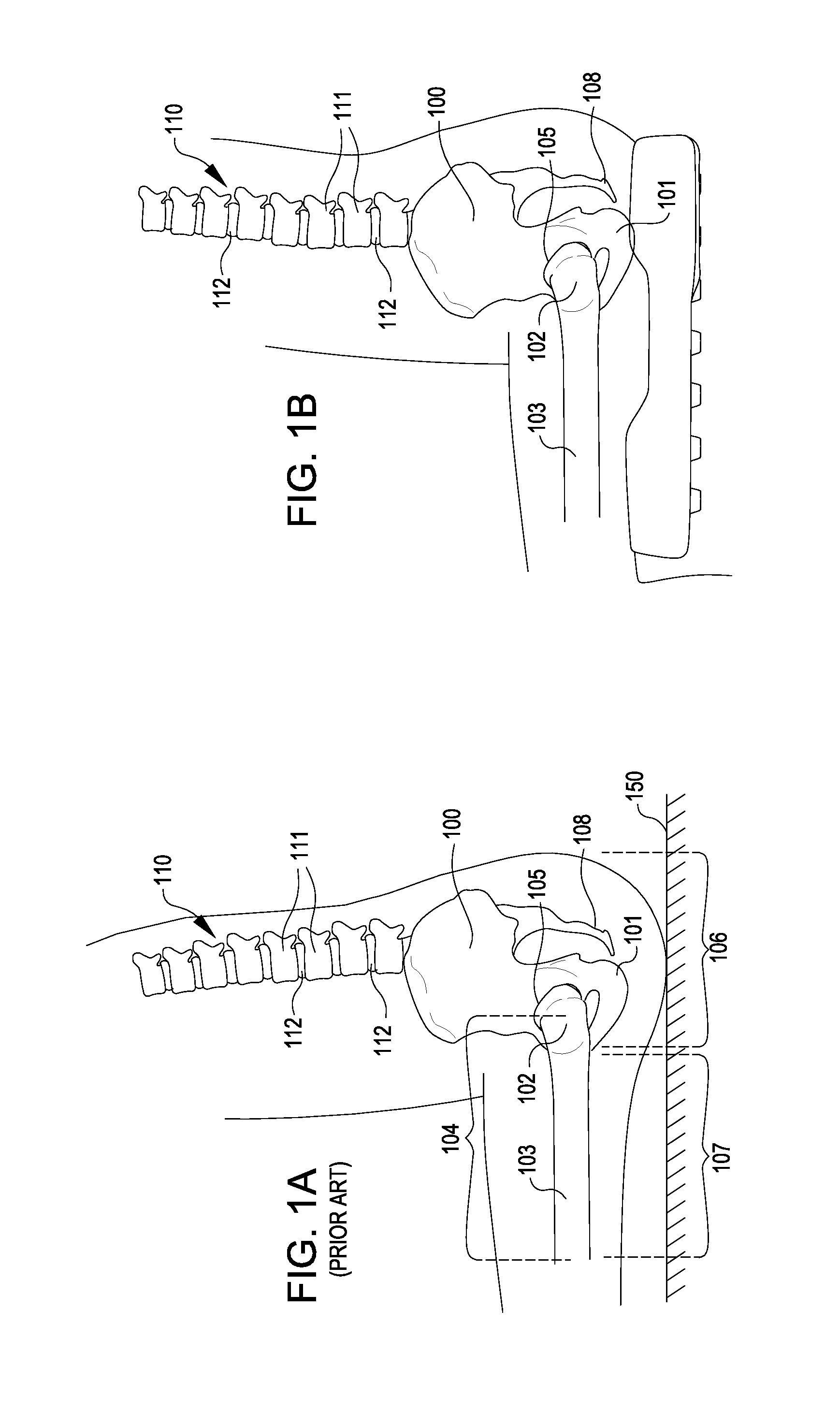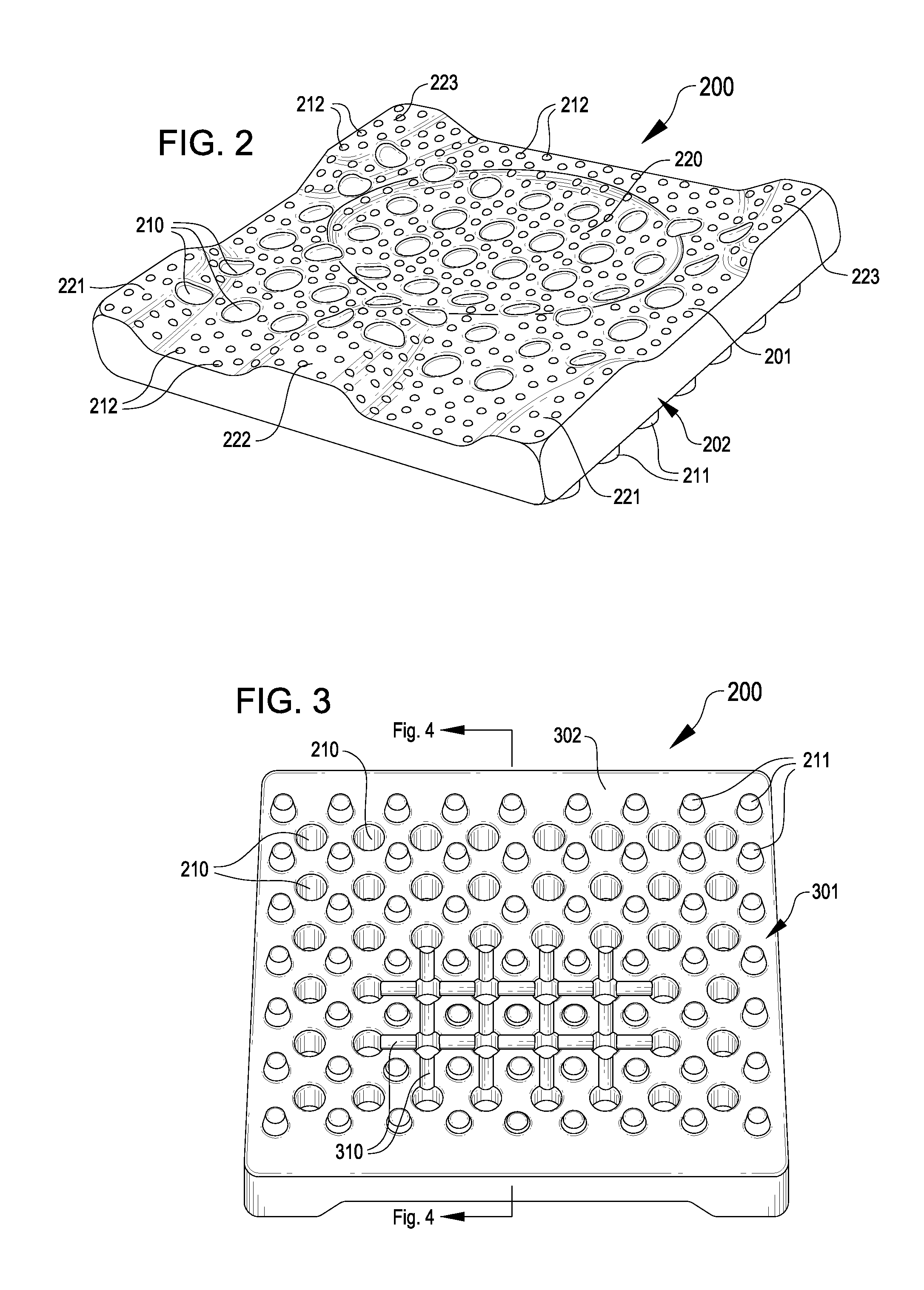Cushion items with flexible contouring
- Summary
- Abstract
- Description
- Claims
- Application Information
AI Technical Summary
Benefits of technology
Problems solved by technology
Method used
Image
Examples
example # 1
Example #1
[0163]Provided can be an orthotic shoe insert for use in a shoe with a footbed, the orthotic comprising: (i) a body; (ii) a top surface on a top side of the body; (iii) a bottom surface on a bottom side of the body and configured to face the shoe footbed when the orthotic is installed in the shoe, the bottom surface comprising at least one support configured to, when the orthotic is installed in the shoe, offset the bottom surface from the shoe footbed an amount sufficient to allow airflow between the bottom surface and the footbed; and (iv) a plurality of holes, each hole in the plurality passing through the top surface, extending through the body, and passing through the bottom surface.
example # 2
Example #2
[0164]Provided can be a sleeping surface overlay for use with a sleeping surface, the overlay comprising: (i) a body; (ii) a top surface on a top side of the body; (iii) a bottom surface on a bottom side of the body and configured to face the sleeping surface when the overlay is installed on the sleeping surface, the bottom surface comprising at least one support configured to, when the overlay is installed on the sleeping surface, offset the bottom surface from the sleeping surface an amount sufficient to allow airflow between the bottom surface and the sleeping surface; and (iv) a plurality of holes, each hole in the plurality passing through the top surface, extending through the body, and passing through the bottom surface.
example # 3
Example #3
[0165]Provided can be a pet crate liner for use in a pet crate have a crate floor, the liner comprising: (i) a body; (ii) a top surface on a top side of the body; (iii) a bottom surface on a bottom side of the body and configured to face the crate floor when the pet crate liner is installed in the pet crate, the bottom surface comprising at least one support configured to, when the pet crate liner is installed in the pet crate, offset the bottom surface from the crate floor an amount sufficient to allow airflow between the bottom surface and the crate floor; and (iv) a plurality of holes, each hole in the plurality passing through the top surface, extending through the body, and passing through the bottom surface.
PUM
 Login to View More
Login to View More Abstract
Description
Claims
Application Information
 Login to View More
Login to View More - R&D
- Intellectual Property
- Life Sciences
- Materials
- Tech Scout
- Unparalleled Data Quality
- Higher Quality Content
- 60% Fewer Hallucinations
Browse by: Latest US Patents, China's latest patents, Technical Efficacy Thesaurus, Application Domain, Technology Topic, Popular Technical Reports.
© 2025 PatSnap. All rights reserved.Legal|Privacy policy|Modern Slavery Act Transparency Statement|Sitemap|About US| Contact US: help@patsnap.com



